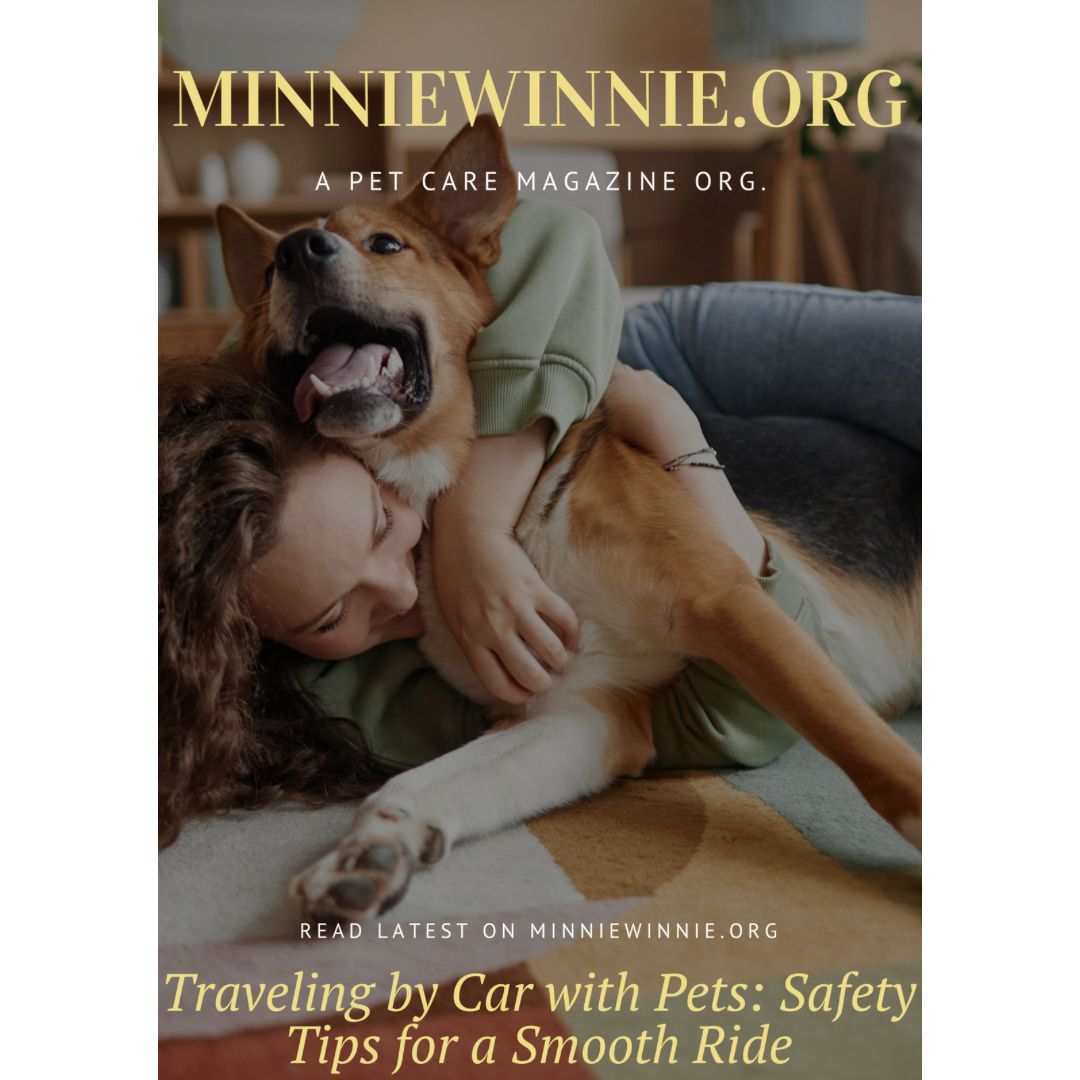Traveling by Car with Pets: Safety Tips for a Smooth Ride
Traveling by car with your pet can be a fun and exciting experience, but it’s important to prioritize their safety and comfort to ensure a smooth journey. Whether you’re heading to the vet, going on a road trip, or visiting family, here are essential tips for keeping your pet safe, calm, and happy while on the road.
1. Use the Right Restraint for Your Pet
Just like humans, pets need to be properly secured during car rides to prevent accidents or injuries. Unrestrained pets can distract drivers or become projectiles in the event of a sudden stop or collision. Here are a few safe restraint options:
- Pet seat belts: Specially designed harnesses attach to the car’s seat belt system, keeping your dog or cat safely secured.
- Pet carriers: For smaller pets, a well-ventilated and sturdy carrier is an excellent option. Make sure the carrier is secured with the seatbelt or positioned in a way that it won’t move during the ride.
- Pet booster seats: For small dogs, booster seats allow them to sit comfortably while still being restrained.
- Crates: Larger pets may prefer to ride in a crate. Make sure the crate is big enough for your pet to stand, turn around, and lie down, and secure it in the back of the car to prevent movement.
- Tip: Never allow your pet to sit on your lap while driving. It’s dangerous for both you and your pet.
2. Keep Your Pet Calm and Comfortable
Long car rides can be stressful for some pets, especially if they’re not used to being in a vehicle. Here’s how to help them feel more comfortable:
- Introduce them to car rides gradually: Start with short trips to help your pet get used to the motion of the car and build up to longer journeys.
- Bring familiar items: A favorite blanket, toy, or bed can provide comfort and a sense of familiarity during the trip.
- Play calming music: Classical music or calming pet playlists can help reduce anxiety and keep your pet relaxed during the ride.
- Use pheromone sprays or calming treats: Products like calming sprays or treats with natural ingredients can help soothe anxious pets.
- Tip: Avoid feeding your pet a large meal right before traveling, as it may cause motion sickness. Instead, feed them a light meal several hours before the trip.
3. Take Regular Breaks
If you’re on a long road trip, be sure to take regular breaks for your pet to stretch, use the bathroom, and drink water. Ideally, you should stop every 2-3 hours to give your pet a chance to relieve themselves and get some fresh air.
- Dogs: Take your dog for a short walk on a leash during breaks to help them expend some energy.
- Cats: For cats traveling in carriers, offer them a litter box during breaks or once you reach a rest stop, though some cats may prefer to wait until you reach your destination.
- Tip: Never let your pet out of the car without a leash, even if they are usually well-behaved. New environments can be overwhelming, and your pet may run off or get disoriented.
4. Prepare a Pet Travel Kit
Just like you pack essentials for yourself, your pet needs their own travel kit to ensure they have everything they need during the trip. Your pet travel kit should include:
- Water and collapsible bowls: Keep your pet hydrated, especially on hot days or long trips.
- Food and treats: Bring enough food for the journey, plus a few extra portions in case of delays.
- Waste bags or litter: Don’t forget waste disposal bags for dogs or a small portable litter box for cats.
- Leash and harness: Ensure your pet is leashed when outside of the car.
- Comfort items: Pack your pet’s favorite blanket or toy to make them feel more at ease.
- Medications: If your pet is on any medication, be sure to bring it along with clear instructions for dosages.
- Pet first-aid kit: Include items like bandages, antiseptic wipes, and any specific medical supplies your pet may need in case of an emergency.
5. Never Leave Your Pet in a Hot Car
One of the most important safety rules when traveling with pets is to never leave them alone in a parked car. Even on mild days, the temperature inside a car can quickly rise to dangerous levels, putting your pet at risk of heatstroke or death. If you need to leave the car, take your pet with you or ensure someone stays behind to watch them.
- Tip: Invest in sunshades or window covers to help keep the car cooler while you’re driving, and make sure your pet has access to fresh water at all times.
6. Plan Your Route and Destination
Before embarking on your trip, plan ahead to make sure both your route and destination are pet-friendly. Some considerations include:
- Pet-friendly accommodations: If you’re staying overnight, ensure that hotels or rental properties along your route welcome pets. Many websites and apps allow you to filter accommodations based on pet policies.
- Pet-friendly stops: Research pet-friendly rest stops or parks where your pet can take a break and stretch their legs.
- Emergency vet clinics: Know the location of emergency veterinary clinics along your route, just in case.
7. Monitor Your Pet’s Behavior
While traveling, it’s important to keep an eye on your pet’s behavior for signs of stress, discomfort, or illness. Some pets experience motion sickness, which can lead to vomiting, drooling, or lethargy. If your pet struggles with motion sickness, talk to your vet about possible solutions, such as anti-nausea medication.
- Tip: Signs of anxiety during car rides may include excessive panting, pacing, whining, or trembling. If your pet shows extreme anxiety, consult your vet for recommendations on behavior training or calming supplements.
Conclusion
Traveling by car with your pet can be an enjoyable experience when proper safety measures are in place. From using the right restraints to keeping your pet calm and comfortable, taking these precautions ensures a smooth and stress-free ride for both you and your furry friend. With careful planning, your pet will feel safe and secure, allowing you to focus on the journey ahead.










